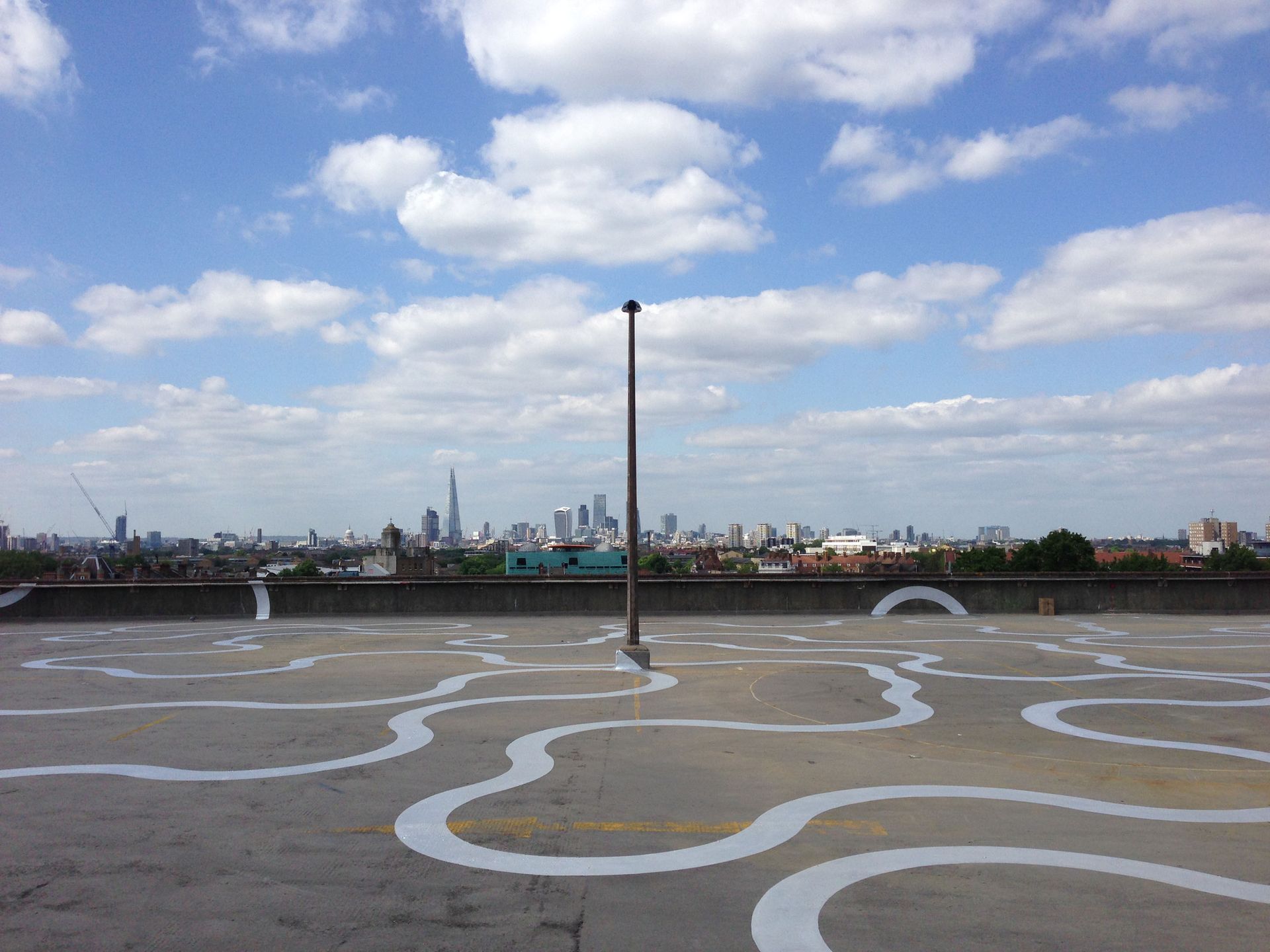One of London’s largest sculpture spaces has today, 28 May, unveiled its latest commission—and it’s not a sculpture. For the ninth edition of Bold Tendencies, the British artist Richard Wentworth has created a meandering design in aluminium paint across the car park’s roof. “I’d like it to feel like god has got a stencil set. Or at least some part-time angels came down” to imprint the snaking pattern. “I didn’t want it to distract from that”, he said before the opening, pointing to what must be the best view of London.
The half abandoned multi-storey car park—built for a supermarket that never materialised—has been used as a venue for showing art since 2007. Started by a group of young artists and curators involved in the emerging Peckham art scene, it has since evolved into a yearly event that even the most intrepid north Londoner will make the trip south to visit—if not for the art, then certainly for the view and Frank’s Café, serving Campari cocktails to match its red awning roof.

Up on the roof “you really experience light as a canopy”, Wentworth says. He goes on to list the rapidly changing sky, the airlines zipping by, and the puddles that had gathered during his first visit in December, as playing a part in his decision to make this flat work for a sculpture commission—one of his largest to date.
As well as snail trails, Portuguese pavements, and the patterns made when testing a biro on a scrap of paper, Wentworth adds the “use of aluminium paint in American painting” by artists such as Jackson Pollock, Frank Stella and Jasper Johns as coming to mind. And its more functional usage in the US: “every bloody roof is toshed with it—whenever I’m in New York I always go ‘oh, gorgeous!’”
The work, titled Agora after the Ancient Greek word for an open assembly space, is sponsored by Johnstone Trade and will become Bold Tendencies’ first permanent commission on the roof. Two further commissions by Metahaven and Airbnb Pavilion will also open to the public today.
Wentworth says that he hopes Agora is “folkloric” and that it reflects the public space it is in. And even “if everybody up here is highly educated and has got nice hair and good teeth” he says smiling with a mouth full of fillings, “it is still actually a democratic space. And even if it isn’t a democratic space, it asks you lots of questions about urbanism, about cities, about this city. What is this city here?” and once again points out at that view.

